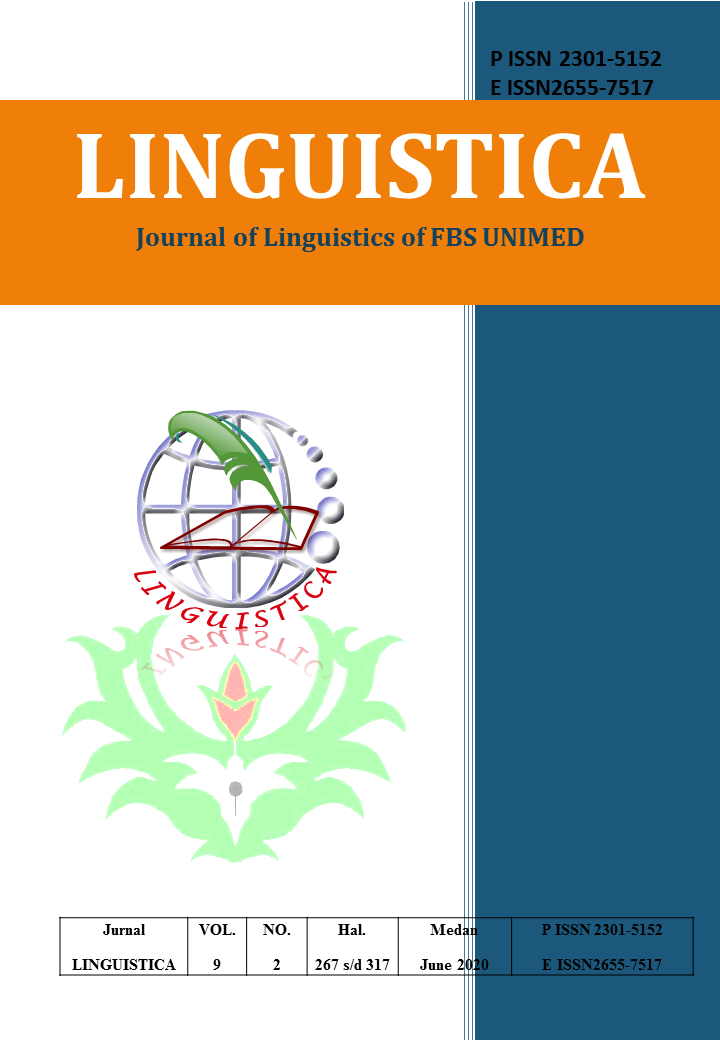THE INTERRUPTION USED BY THE HOST AND GUESTS IN SARAH SECHAN TALK SHOW ON NET TV
DOI:
https://doi.org/10.24114/jalu.v9i2.18944Abstract
This research aims to identify the types and reasons of interruption uttered by host and the guests in Sarah Sechan talk show. To answer the objectives of the research, the researcher used conversation analysis approach. The data were the utterances that contain the interruption from the conversation in Sarah Secham Talk Show Net TV. The findings showed that there were four types of interruption employed by the host and guests, i.e. simple interruption, overlap interruption, silent interruption and butting-in interruption. From 56 data found in the talk show, simple interruption had the biggest number of occurrence with 37.50%. Simple interruption was the most appearing type in this talk show because each guest in every episode mainly gives his/her floor to the interrupter, which is the host, Sarah sechan even though his/her utterance was disrupted. The smallest number of interruption™s type was butting-in interruption with only 5.35%. The host or the guests seldom do butting-in interruption because they give a chance to the interrupter to deliver his/her message. To decide the reason of interruption, the writer looked at the context of the discussion between the host and the guests. The common reason was Completing with 35.71% and the other reason was showing agreement, seeking clarification, correcting, breaking up, and reject some point. From all of this reason the writer conclude that the interruptions in this talk-show were not violation. Keywords: conversation analysis; interruptionn; Sarah Sechan TalkDownloads
Published
2020-07-03
Issue
Section
Articles
License
Copyright (c) 2020 ANNISA ANGGIA AYU MAGHFIRO, Meisuri Meisuri, Muhammad Natsir

This work is licensed under a Creative Commons Attribution-ShareAlike 4.0 International License.
Authors who publish with this journal agree to the following terms:
- Authors retain copyright and grant the journal the right of first publication with the work simultaneously licensed under a Creative Commons Attribution License that allows others to share the work with an acknowledgment of the work's authorship and initial publication in this journal.
- Authors are able to enter into separate, additional contractual arrangements for the non-exclusive distribution of the journal's published version of the work (e.g., post it to an institutional repository or publish it in a book), with an acknowledgment of its initial publication in this journal.
- Authors are permitted and encouraged to post their work online (e.g., in institutional repositories or on their website) prior to and during the submission process, as it can lead to productive exchanges, as well as earlier and greater citation of published work (See The Effect of Open Access).
- This work is licensed under a Creative Commons Attribution-ShareAlike 4.0 International License.

